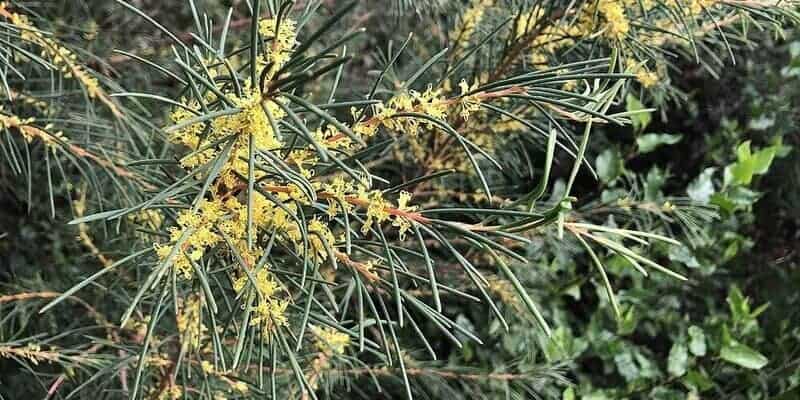Are you tired of the same old flowers in your garden? If wild is more your speed — and you find the humdrum of your usual plants to be too boring — you’re going to love the Hakea Nodosa.
Otherwise known as the Yellow Hakea, the Hakea Nodosa packs more sunshine than a kid’s toothy grin.
Read on to know why this native Australian flowering plant is just what you need to breathe life into your garden.
A brief description of the Hakea Nodosa
With its bright yellow floral clusters, and spine-like leaves, the Hakea Nodosa is a spectacle to behold.
This plant makes for an excellent rounded shrub in your garden. It looks great on its own as a screen plant, and looks even better when used as an accent plant.
Position it next to a flowering plant in a contrasting colour to make the Hakea Nodosa really stand out.
It looks like sunshine on a stem, and all of your garden visitors (like birds!) will love this plant.
Like other local Hakea species such as the Hakea Petioaris and the Hakea Laurina, the Yellow Hakea belongs to the plant family Proteaceae.
You’ll find plenty of this variety in south-eastern South Australia, Victoria and Tasmania, where it grows mostly in woodlands and swamps.
Foliage
When it comes to the Yellow Hakea, foliage is anything but ordinary. Blue-green, needle-shaped leaves measuring 0.7 to 2.5mm wide and 0.8 to 5cm long adorn the plant gracefully.
The leaves and stems open up to form an erect, sprawling shrub. Depending on their growth, some Yellow Hakeas produce flat instead of spine-like leaves.
Flowers

If you think this Hakea’s leaves are special, wait until you see the flowers.
Flowering season runs from April to August, during which you’ll see your garden glow with the blazing deep yellow colour that this shrub is famous for.
In a sea of green, the Hakea Nodosa is a standout — clusters of golden yellow flowers dot each stem like tiny sunbursts peeking from a bluish-green backdrop.
Bright yellow is the common colour of the Hakea Nodosa flower, but some flowers can also appear in cream or pale yellow.
Fruit
A Yellow Hakea plant can bear dimorphic fruit types, a quality unique to this Hakea variety.
This means that the plant can have two different-looking fruits: one is a smooth surfaced fruit, while the other has a rough tuberculate surface that is woody in texture.
Be sure to keep the seeds if you want to propagate — you’ll recognise them by their elliptical shape and dark grey to grey-yellow colour.
Hakea Nodosa care
Make your outdoor space epic with this striking but low-maintenance rounded shrub. You get double the value for its eye-catching form and no-fuss nature.
Hakeas grow well in Australian soil and love the local weather. This Hakea variety thrives in moist to wet clay soils.
You can plant your shrub under full sun or full shade — either way, it will thrive. It is also fairly frost tolerant.
Propagating the Hakea Nodosa is not a problem, as you can grow them from seed. Growing them from cuttings is also possible, but it’s not as reliable as the seed method.
Common Hakea Nodosa problems
There may be instances when a Hakea plant suddenly dies in a span of a week — and yes it can be pretty disturbing!
Possible causes of plant deterioration are fertiliser poisoning (native plants don’t respond well to nitrogen-infused fertiliser) or an infected root system.
When this happens, the best thing to do is have professional gardening experts look into the situation. Your local gardeners can give you recommendations on what environmental conditions best suit your Hakea variety.
They can also maintain your native plants for you while you just sit back and relax.

